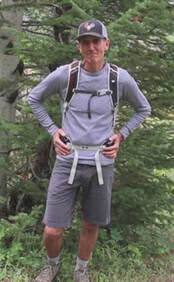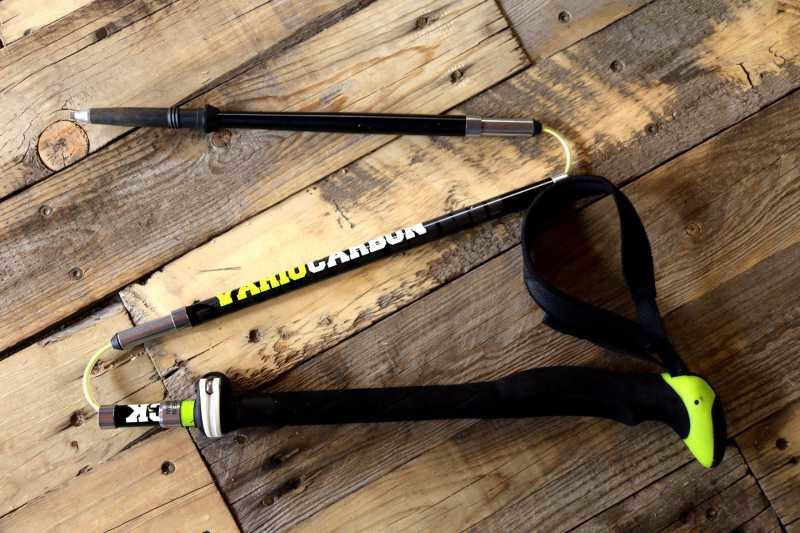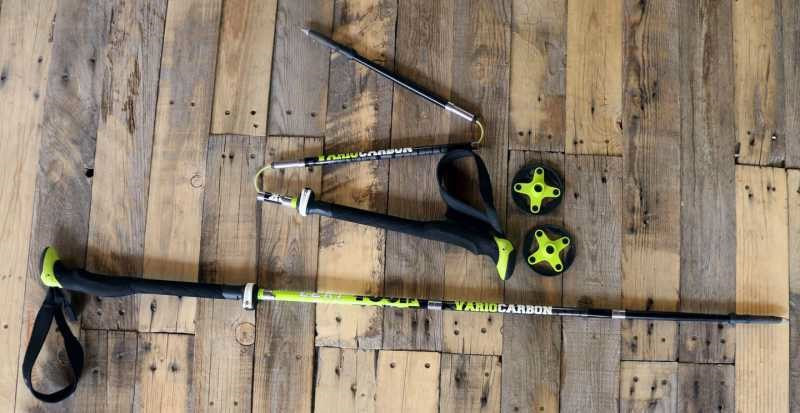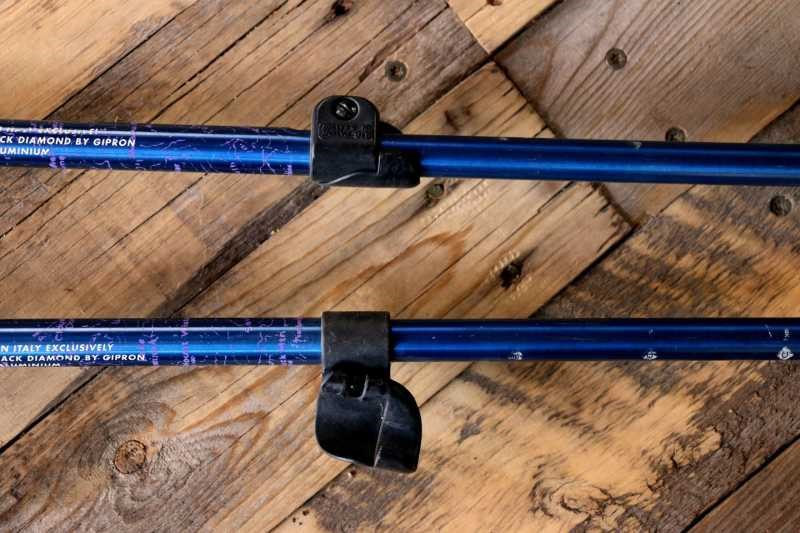|
This article is extracted from the current issue of HIKE ROCKY magazine; to learn more about becoming a member to read the entire publication, click here by Murray Selleck, HIKE ROCKY magazine's gear reviewer NOTE: HIKE ROCKY magazine does not receive compensation on brands recommended in Murray's reviews Trekking poles should not be an afterthought as you organize your gear for a hike. Many hikers have changed their thoughts about trekking poles from thinking of them as an optional accessory to believing in them essential. They won't leave home without them! And of course, there are just as many hikers who have never even considered using trekking poles. These hikers are young. Trekking poles are only for older hikers. They're fit. Trekking poles are only for those who need help with their balance. They're athletic. Trekking poles will only get in the way… or so they believe. Trekking poles have come a long way since whittled walking sticks, and their benefits far outweigh any hesitation you many have in using them. If you are open minded to developing the habit of using trekking poles you'll gain hiking performance and increase your endurance. Here is the short list of how trekking poles will benefit you whether you're on a day hike or a multi day backpack trip. Enhance your balance with two additional points of contact: Hike uphill and gain altitude more effectively by using arm, shoulder, and core abdominal muscles. Engaging these muscles on an ascent helps propel you up and forward. An additional benefit is maintaining and even increasing strength in these muscles as you hike. Ease joint stress and muscle strain: Especially on the descent, trekking poles reduce the heavy impact of your feet hitting a hard trail. Multi-functional: Trekking poles can be used to set up a lightweight shelter to wait out a rain shower. They can be used to create a splint in a first aid emergency. With the right poles and accessories they can be used as a monopod for photography. And perhaps, they can be used for self defense in an unpredictable animal situation. Seasonal: Trekking poles can be used year-round as your hiking poles or even in the winter as your snowshoeing pole. Just swap out the baskets! Whether you are looking to purchase your first pair of trekking poles or upgrading an existing pair you'll find plenty of choices to make your selection. Here are a few things to consider when you begin your search. Pole Sizing The best way to size a trekking pole is to hold it. With the grip in your hand and holding the pole in front of you your elbow should be bent about at a 90 degree angle. If it is slightly lower that is better than slightly too long. Sizing the pole length this way gives you a natural arm swing as you hike (especially on level terrain). If the pole is too long you'll be reaching higher to clear the pole as you swing it forward. Reaching higher is wasting energy… A natural feeling arm swing is what you're looking for. Adjustable or fixed length? Adjustable trekking poles can allow for 5 to 10 centimeters of length adjustment up or down. You can really fine tune the length with an adjustable pole to the exact length that feels most comfortable to you. The adjustable pole is handy when the terrain changes. Hiking uphill you may want to shorten your poles. Hiking downhill you may want to lengthen the poles. And on a sidehill traverse you may choose to have one pole longer (downhill side) and one pole shorter (uphill side). Or if you don't care to take the time to make length adjustments on your hike, go with a fixed length pole. Fixed length poles come in 5cm increments. Runners and fast packers prefer this option. They are moving quick and typically won't take the time to adjust their poles no matter the terrain. There are two primary ways to adjust pole length. The original way was with an expansion mechanism located on the top of the lower shaft and as you would twist the upper and lower shafts in opposite directions the expander would grip the inside sidewall of the upper shaft and snug itself tight into place. It is effective but prone to slip if to loose. They're prone to lockup if you tighten it too much and hard to loosen to make another adjustment. Or it required cleaning to keep it working as reliably as possible. Not wonderful. This type of adjustment is still used but found mostly on price point trekking poles. The more effective adjustment is with a flick-lock or cam-style lever. Black Diamond first developed this mechanism and it quickly became incredibly popular. Once the patent ran out the rush for manufacturers to create their own version was unleashed. Now practically every trekking pole has this style of adjustment. Grips Take the time to consider the grips on the poles you want to purchase. Some grips are made with a very hard plastic typically found on price point models. These grips may become slippery especially on hot days when your hands get a bit sweaty but this style of pole and grip will save you money. Foam grips and cork grips are more comfortable no matter the weather. Hot or cold, these grips remain comfortable in your hand but be prepared to pay a little bit more for your poles. These grips are worth the extra money! I recommend checking out the top of the grips for comfort, as well. Often I'll place my palm on the very top of the grip for some extra push. How the top of the grip is shaped can aid in comfort. If it is too narrow or pointed you may lose this as an option for hand placement. Pole Straps Straps can be constructed of simple flat webbing to create a loop or more involved with specific left and right straps with padding. The more refined the design, the more the price of the pole increases. As usual, you get what you pay for! On a recent hike in RMNP I saw several hikers using trekking poles but none of the hikers were using the straps correctly! Check out the photos in this article or play the video for the best way to use your straps. By using the straps correctly you can save energy but not having to grip the grips so firmly. With the strap correctly attached around your hand and wrist you will control your pole placements more effectively. Shock Absorbers Another feature that is well worth the price are shock absorbers. Back in the day, shock absorbers on trekking poles were a metal spring design. The spring was small but it created an almost pogo stick like feel in your hands. Today's shock absorbers are made from elastomers that cushion the shock of the pole hitting the ground or rock and sending that harsh energy into your wrist and elbow. You'll barely notice these elastomers working to absorb those hits. It is a very subtle feel but by the end of the day you know they've done their job because your wrists, arms, and shoulders are still feeling fresh. The elastomer shock absorbers can be found near the bottom of the pole above the tip or ferrule or near the top just below the grips. Overall Weight of Trekking Poles When shopping for trekking poles consider the weight of the poles. The packaging will have this information printed on it but hold the pole and feel the weight of the poles in your hands. Overall weight is important to consider. Less expensive poles will be heavier. More expensive poles (either aluminum or carbon fiber) will weigh considerably less. Swing weight is also a reason to hold the poles in your hands. Overall pick-up weight of the pole is important but how does the pole feel as you swing the pole forward with each step? Swing weight is the resistance you feel bringing the pole forward. The less swing weight you feel the more energy you save along the trail. By lightly swinging the pole forward and back you can feel either more or less swing weight with each pole you try. This little test will also let you feel how snug the upper and lower shafts fit together. Lesser expensive poles might feel loose or wobbly at this connection point. Higher performance poles will feel solid and strong whether it is a two, three, or z-style sectioned pole. Accessories Many trekking pole manufactures include a few accessories with your purchase. The small disc trekking pole basket comes standard on all trekking poles. Some poles come with a winter basket that you can swap out and continue to use your poles in the winter. Other important accessories are tip protectors. These are important in the practice of Leave No Trace. The tip protectors prevent your pole from chipping rock along the way. This is very important on soft sandstone in the desert but should still be a consideration anywhere you hike. Tip protectors will also soften the sound of your poles click, click, clicking up and down the trail… kind of sound proofing the poles. Other accessories might include an option to convert the grips into a monopod for photographers and a stuff sack to keep everything together and easy storage. All-in-all, trekking poles will be a great addition to your hike My one whole-hearted recommendation, no matter which manufacturer or model you choose, is to use the pole straps correctly. Don't look like a rookie out there! Happy Trails.  Murray Selleck moved to Colorado in 1978. In the early 80’s he split his time working winters in a ski shop in Steamboat Springs and his summers guiding on the Arkansas River. His career in the specialty outdoor industry has continued for over 30 years. Needless to say, he has witnessed decades of change in outdoor equipment and clothing. Steamboat Springs continues to be home. The publication of this piece of independent and local journalism was made possible by Brownfield's and Rambo's Longhorn Liquor, both of Estes Park.
1 Comment
It really helped when you said that we need to consider the weight of the trekking poles when buying one which is usually mentioned in the packaging. I wonder what would be the best fit for me, especially when I will be a first timer. My husband and I plan to try this kind of activity next year as part of our New Year's resolution which is to become more active which is why we plan to buy a pepper stick trekking pole before this year ends.
Reply
Leave a Reply. |
Categories
All
|
© Copyright 2025 Barefoot Publications, All Rights Reserved






